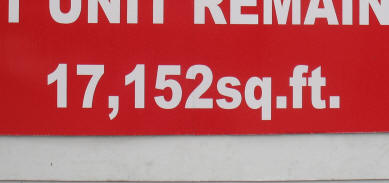|
Contractions are outlines where some of the
consonants or syllables are omitted.
-
Their purpose is to
achieve greater brevity for common words, or to avoid overlong
or awkward outlines.
-
They are never
vocalised, except for the initially attached diphthong "I".
-
Most of them are
written on the line, regardless of the first vowel of the
contraction or any added prefix.
-
Many of them
stand for two or three variations on the word, and as these are
always different parts of speech, ambiguity is avoided.
Lists below show some of these sets, for
ease of practising. See also Past Tenses
below for disambiguation where necessary.
-
Derivatives
can be formed by adding a prefix, suffix, hook, circle, loop, halving, etc,
to the contraction. These additions are generally (but not always) vocalised
but the contraction part of the outline remains unvocalised.
Some of the "-ively" variations are not entirely consistent in
the extent of their vocalisation, but the exact dictionary versions are
given here; in any case you will not need to vocalise the
outlines during normal writing.
-
All but 5 of the
contractions use the dot for "-ing" so that they continue to be
recognisable as contractions (see
Suffixes General/Ing page for explanation)
There are many outlines that omit a
lightly-sounded consonant such as "pos(t)man" "assum(p)tion" but as they behave according to the normal rules –
fully vocalised, written in position and standing for only one word
– they do not count as contractions.
-
Short forms consist
of either one consonant stroke, or one vowel sign.
-
Contractions have
two or more strokes.
-
The two names are
merely a convenient way to split the
groups. In the later instruction books "New Course" and onwards, this
distinction is not made, all are called short forms, and
their lists are split according to frequency, with the
majority of single-stroke short forms showing up in List 1. This
enables the learner to master the most frequent outlines first.
Ways in which contractions are formed:
-
Using the first two or three consonants of the word e.g. “resp” for “respect”. If
the speaker actually says the shortened word, such as “rep, max,
Feb, prob, Uni” you should write exactly what they say, using a
vocalised outline (so it does not look like the contraction) and written in
position as per normal rules; you then have their words verbatim and can
make the correct decision when transcribing. If someone says “rep”
they may mean “repeat” or “representative” or "repertory", and “probs" could
mean "probabilities" or "problems".
-
Omitting a medial consonant or syllable(s)
Quite often this is where two consonants come together, and
omitting one of them does not affect the legibility of the
outline e.g. "produ(c)tion".
-
Based on a short form, or two short forms together
e.g. "anything".
-
Two strokes intersected, generally the first two consonants
e.g. "nevertheless".
-
Omitting the first
syllable, only 4 do this.
It
is well worth learning the derivatives and the related words at the
same time,
as this will prevent hesitation, when you might be wondering
if the word dictated calls for a contraction or a full outline. When
in doubt, you should always write the fullest outline you can, and
look it up later.
Past tenses
Some contractions and short forms have the same
form for present and past tenses of a verb and it is usually clear
which is meant from context. If in doubt, write with full strokes,
or, if the outline has already been written, put a wavy line
underneath as a reminder it has a past tense ending. Note that an
intersected dash is only used to signify an intervening dash vowel in an
initially hooked stroke e.g. collect, purchase, furnish (see
Theory 7 Hook R-L).
The ambiguity happens mostly when the contraction is a verb
that is being used as an adjective, or if the outline could be read
a some other unvocalised outline, or more rarely if the word is
being given as a lone example:

discharge water outlet, discharged
water outlet
the exchange goods, the exchanged goods

a suspect person, a suspected person, I saw the suspect*
* the noun is a normal full
outline

project costs, projected costs,
practice word list, practised word list

the people are subject to harsh laws,
the people are subjected to harsh laws
Short forms:

a number list, a numbered list (x2)

an improved plan (x2), an improvement plan
To distinguish:

make informed decisions, make
enough decisions
Absence of context:

I spelled "informed" wrongly.
The past tense of "inform" is "informed".

He said that "opinion" is a short
form outline.
Particularly with "public" and "published" the
latter should always be written in full, as context would mostly give no
clue as to which was meant:

the public report, the published
report
Learning the outlines The best method is to
insert one or two new outlines into a short easy sentence that fills
one line of the notepad, then copy that sentence all the way down
the page, saying it to yourself as you do so. The easy outlines
"carry" the unfamiliar outline, and this allows you to write at a
comfortable and even rate, thus avoiding any "stop/start" tendency.
After a few lines, you know the wording and the shorthand, and so
you can continue writing to the bottom of the page without the need to
glance at the line above. This only works well for sentences; if
drilling single outlines, your brain, fingers and eyes will most likely
give up in disgust after only a few lines of unnatural word
groupings! If you can't manage the whole page, move on and come back
to that page another time.
You could take sentences from your instruction
book and replace one or two words with the outlines you wish to
learn, which ensures that all the shorthand is correct. If you are
using a printed facility drill book, it may be helpful to write out the
shorthand sentences given into your own blank notepad, but with only
one sentence per page. This is not high-speed practice, but it is a good
opportunity to write your most perfect evenly-flowing outlines, to
counteract any sloppy habits that might have crept in.
Abbreviating The term “abbreviation” or “abbreviating
principles” met with in shorthand books is used to mean any method
whereby the outline is made shorter or more compact i.e. using
hooks, circles, loops, halving, doubling, producing an outline that still contains
all the sounds of the word (in most cases). The term is not applied
to contractions/short forms, which mostly leave out some of the sounds
or whole syllables. In normal speaking, the term “abbreviation”
refers to any method that makes either spoken or written words
shorter (such
as SE for South East, PC for personal computer), but within
shorthand instruction books the word is used in a more restricted
sense.
Several placenames (United Kingdom, United States
and others) can be found at the end of the
Contractions Optional
page.
LISTS
The lists below target specific points that may need extra practice. They are
given in the same order as they
occur in the Contractions Main list. You might find it helpful to print them off
for your resource file, spacing them out and filling in the
shorthand.
|
List A –
Contractions using stroke Ing (all the others take dot for -ing) |
List B –
Contraction used for only the singular/ plural/verb |
|
characterising
familiarising
distinguishing
extinguishing
relinquishing
Additionally, a contraction
that ends with a short form which can take stroke Ing will continue to do
so
|
electric
(singular only)
responsibility
(singular only)
irresponsibility
(singular only)
suspect/ed
(verb only)
ratepayers
(plural only)
|
|
List C – Basic
outline includes -ed |
List D – Basic
outline includes -ly |
|
advertised
cross-examined
subscribed
discharged
undischarged
established
disestablished
re-established
exchanged
governed
misgoverned
incorporated
(-ed only)
reincorporated
(-ed only)
informed
misinformed
inspected
reinspected
respected
disrespected
expected
objected
suspected
projected
unprojected
neglected
prejudiced
unprejudiced
manufactured
mortgaged
organised
reorganised
unorganised
disorganised
performed
unperformed
reformed
practised
unpractised
proportioned
misproportioned
published
republished
represented
misrepresented
unrepresented
distinguished
extinguished
relinquished
unprincipled |
commercially
substantially
insubstantially
unsubstantially
especially
financially
independently
indispensably
individually
imperfectly
prejudicially
mathematically
mechanically
probably
improbably
proportionately
disproportionately
irrecoverably
unrecoverably
non-recoverably
sensibly
insensibly
unanimously
uniformly
deficiently
efficiently
inefficiently
non-efficiently
sufficiently
insufficiently
proficiently
influentially
intelligently
unintelligently
intelligibly
unintelligibly
questionably
unquestionably
universally
remarkably
unremarkably
thankfully
unthankfully
inconveniently
irremovably
|
|
List E –Written above the line |
List F –Written through the line |
|
anything
character
commercial/ly
cross-examine/ed/ation
enlarge
executive
incorporated
influential
magnetic/ism
maximum
mortgage/d
neglect/ed
negligence
sympathetic
unsympathetic
thankful/ly
altogether |
difficulty |
|
List G – Intersections |
|
|
denomination/al
enlarge
incandescence
incandescent
inconvenient/ly/cy
irremovable/y
misfortune
nevertheless
notwithstanding
ratepayers
unprincipled |
|




Initialisms, truncations and
abbreviations - they may try, but they cannot catch us up for speed
and convenience. However, the numerals are excellent "shorthand"
already.
Top of page
|